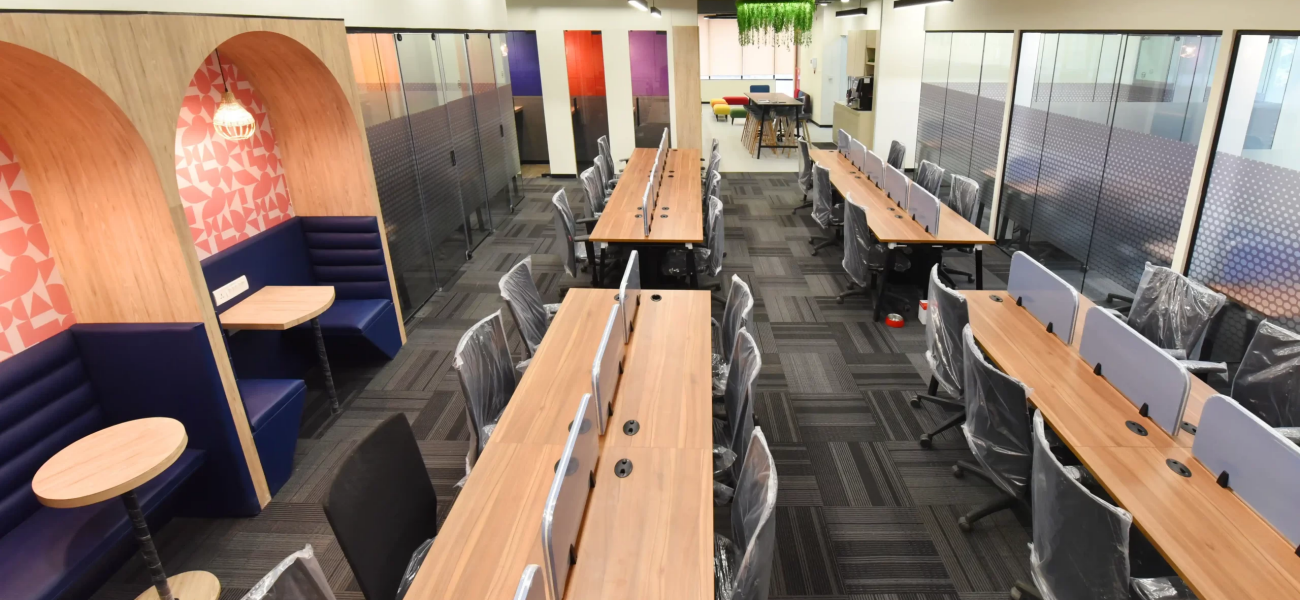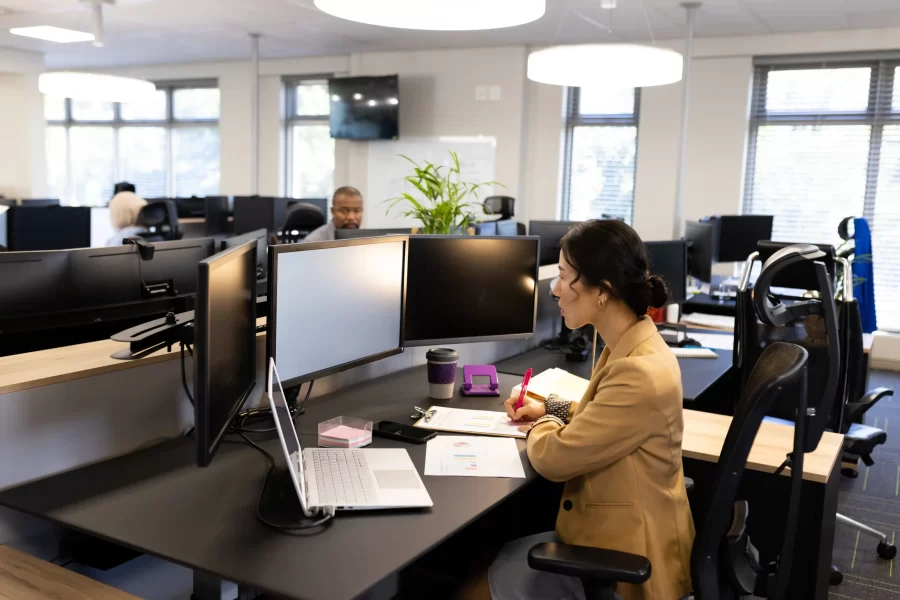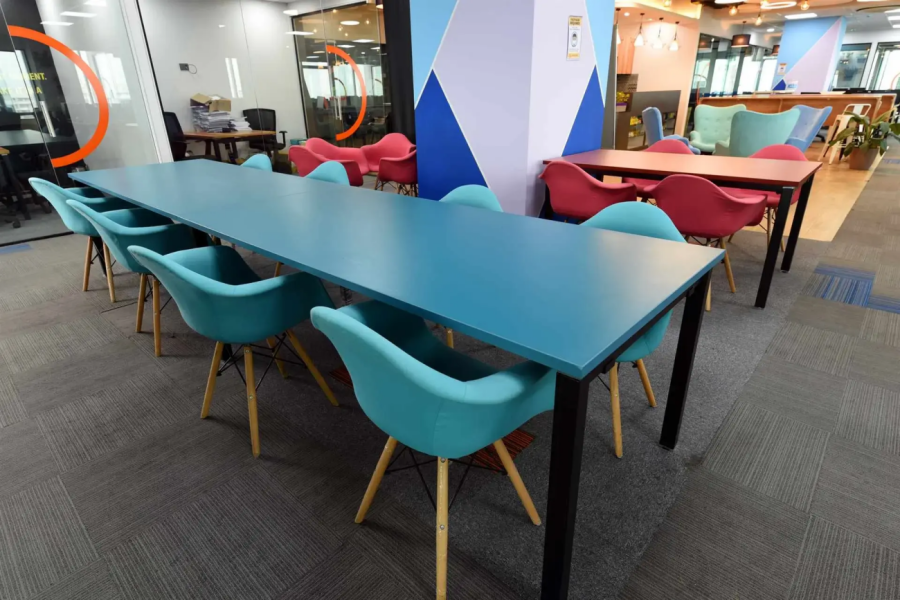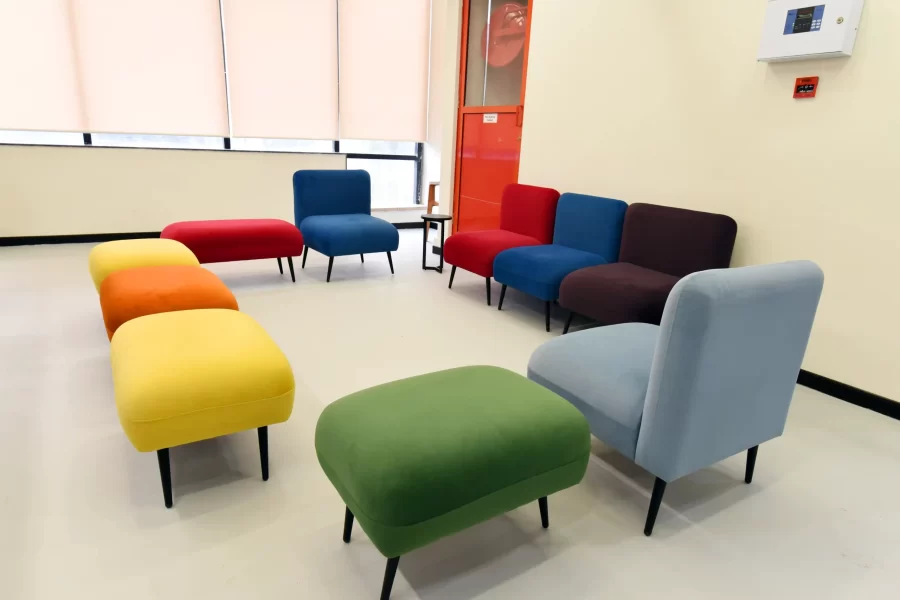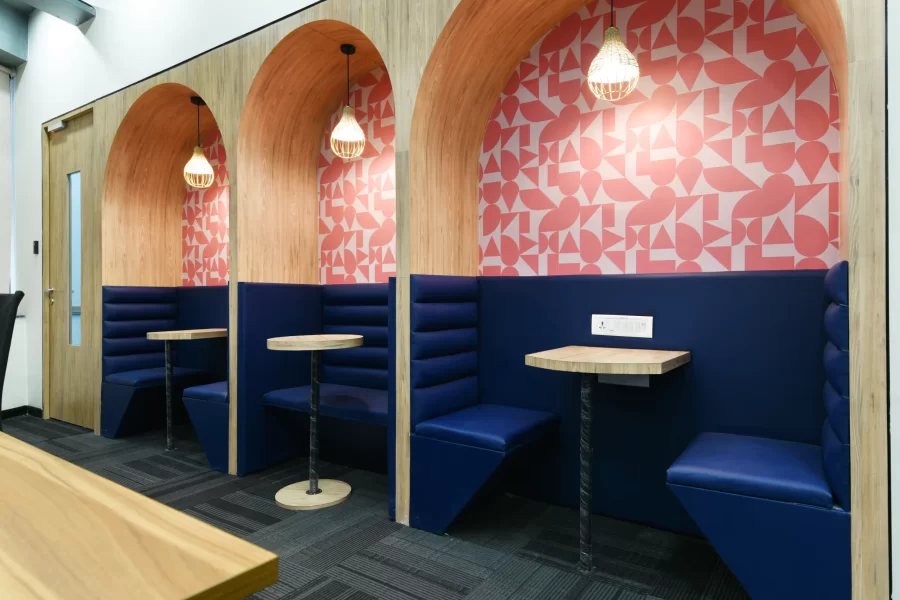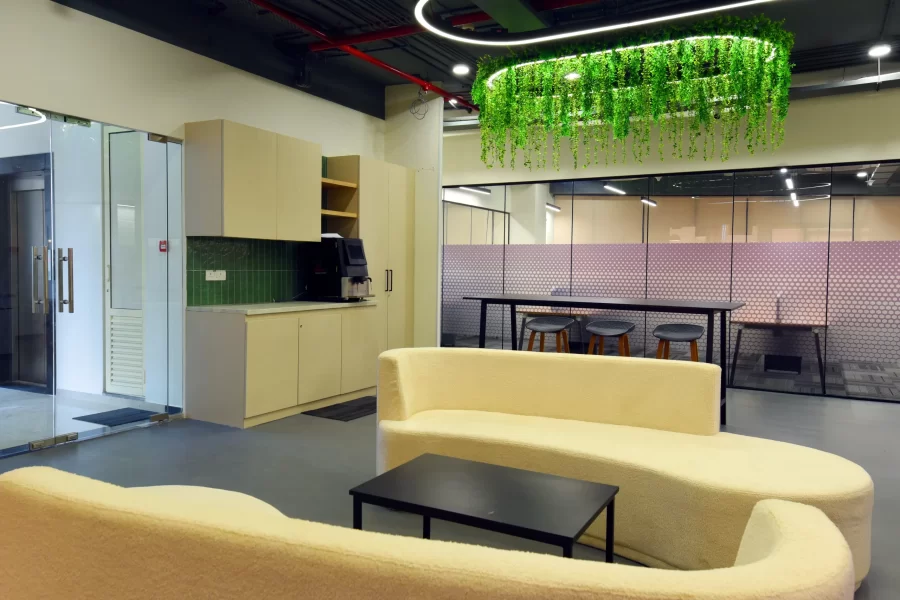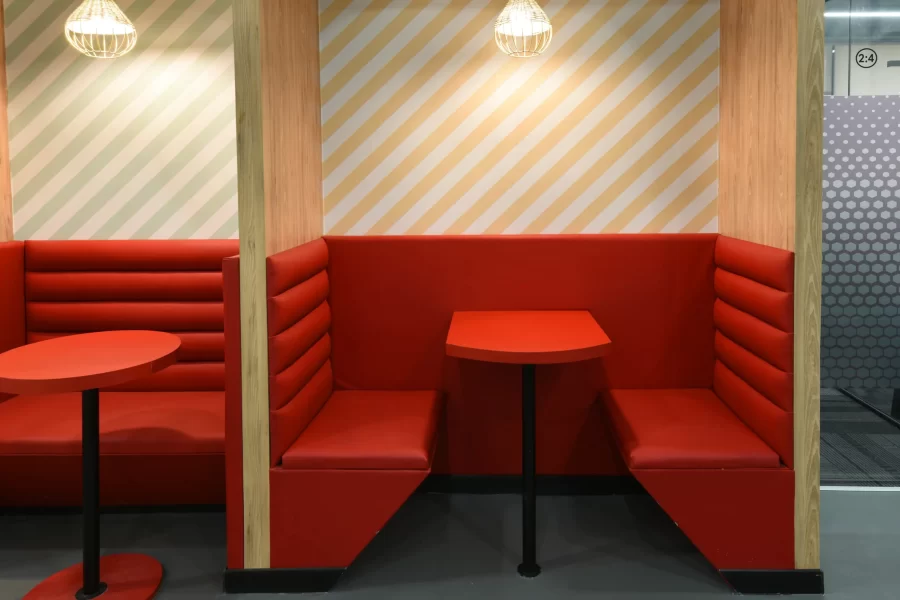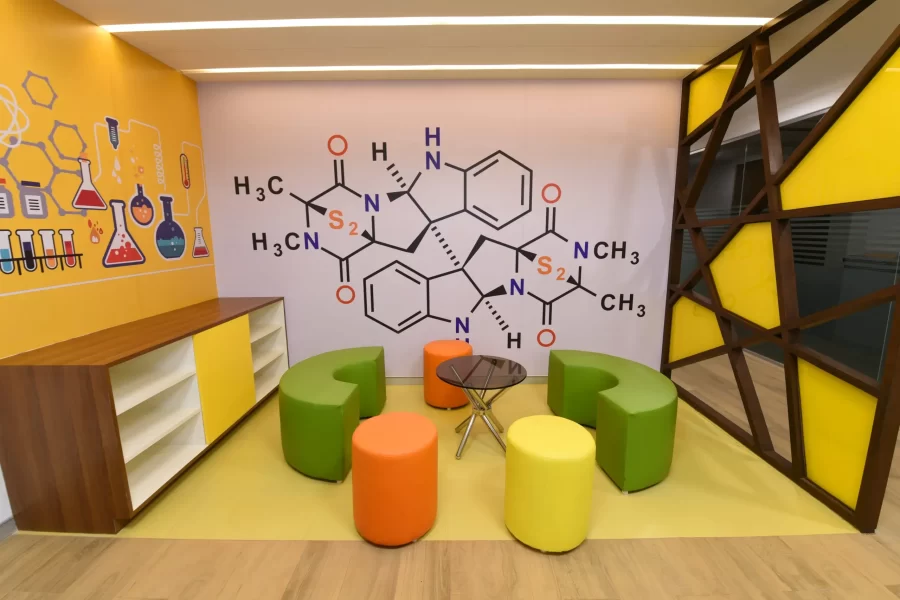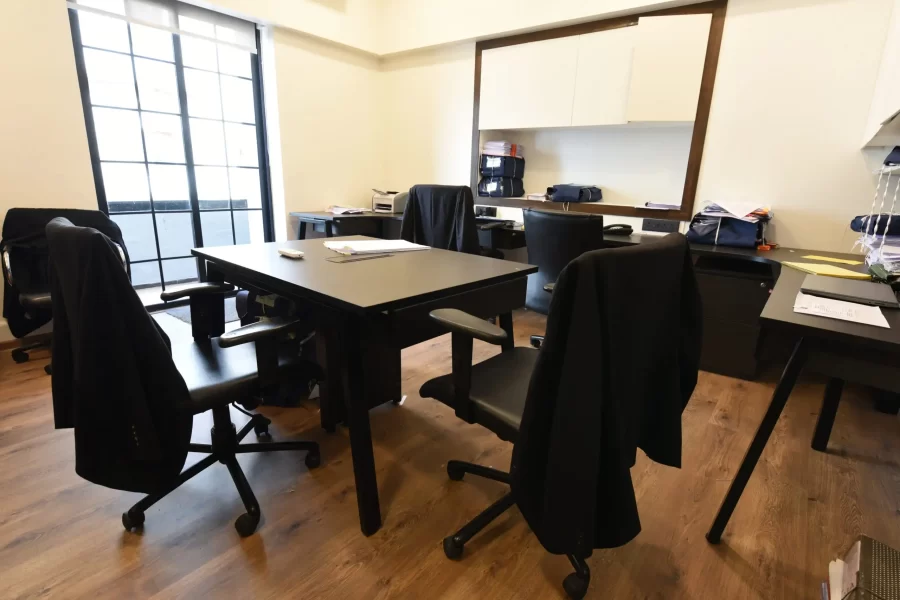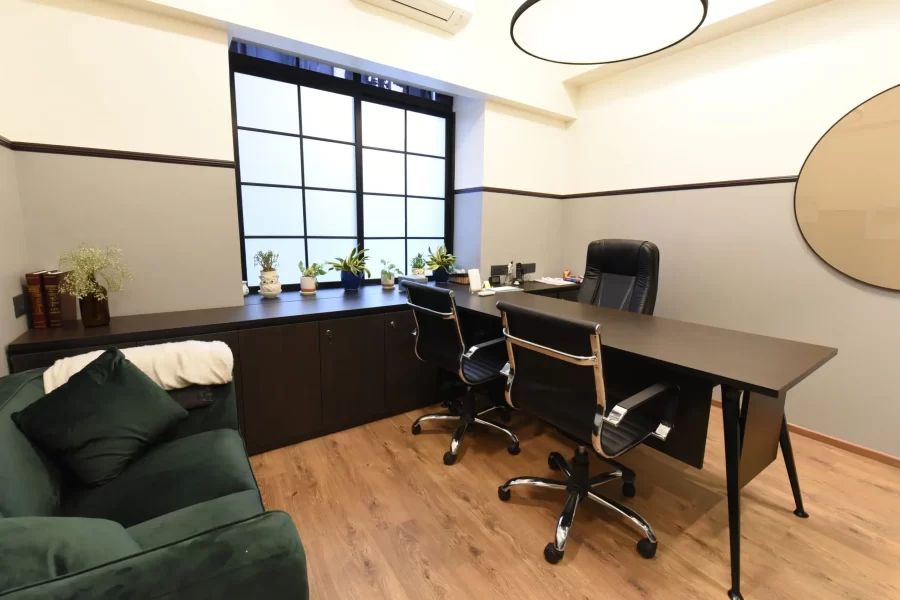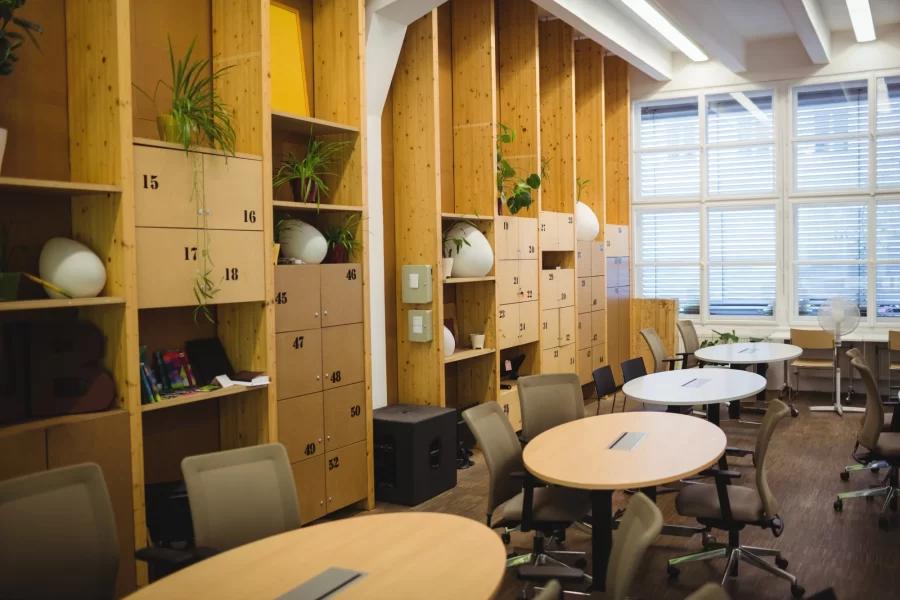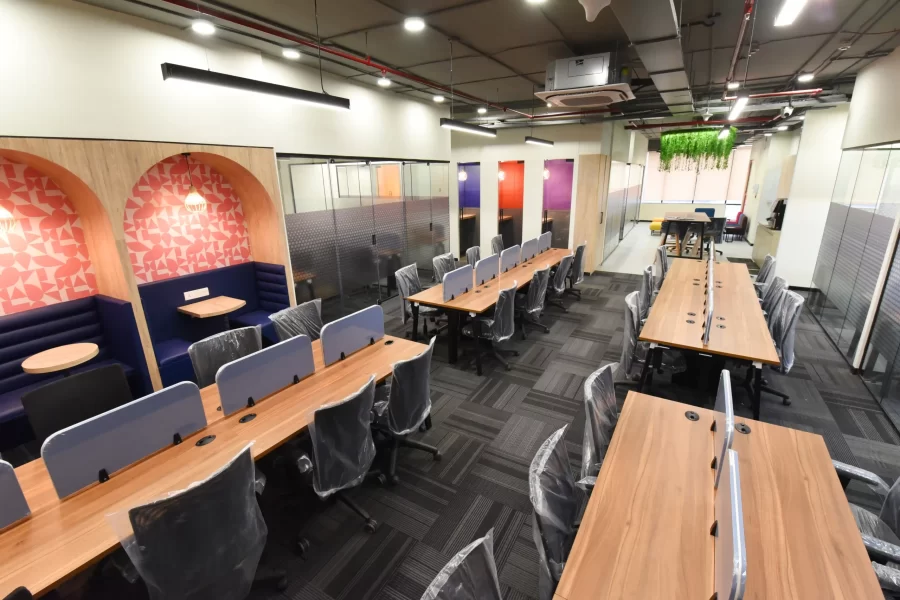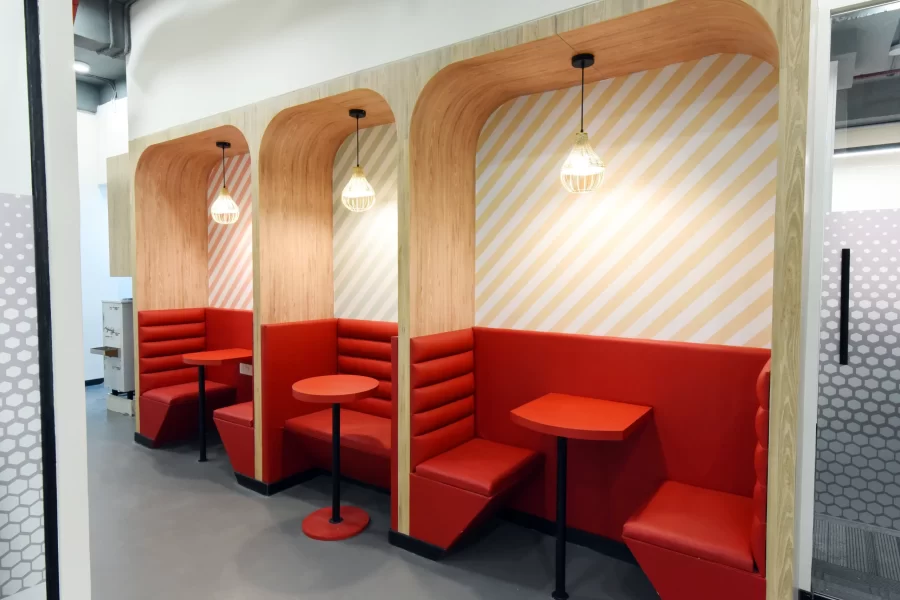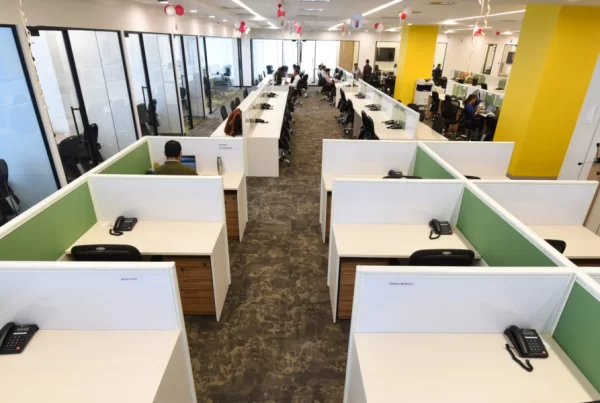As modern work environments are evolving at a global level, the demand for flexible office space is soaring. Companies now value adaptability to meet the requirements of different work modes, such as hybrid and remote work systems as well as shared desking for collaborative working methods.
Flexible workspaces are planned in a way that caters to the diverse needs of a business, encouraging teamwork while also giving employees the freedom to focus on their own. Let’s explore what flexible offices are, their types, key features, benefits of adopting them, and more.
Understanding Flexible Office Space
What is Flexible Office Space?
Flexible office spaces are designed to adapt to the changing needs of the business, employees and daily workflows, supporting the versatile work culture of the modern corporate scenario. Unlike traditional setups with fixed desks and cubicles, flexible workspace designs are spread out in different areas like private zones for focused tasks, hot desking for open collaborative spaces, and modular workstations such as standing desks or café-style seating. This setup allows employees to choose the work spot that best fits their day’s tasks, that is, if they would like to work in solitude or in collaboration.
As more and more companies are embracing flexible workspaces to build a fluid work culture, they are promoting a mix of focused, collaborative, and creative work styles, which ultimately improves productivity.
Key Components of Flexible Office Space
- Open-plan layouts: Such layouts are configured to break down barriers and facilitate teamwork, encouraging spontaneous collaboration and open communication among employees.
- Shared amenities: Flexible workspaces incorporate centralized facilities like printers, coffee stations, breakout zones, Zoom rooms, etc. These shared amenities keep the workflow smooth and bring people together.
- Modular workstations: These setups include standing desks, lounge areas, or coffee bars that serve as fresh and quirky alternatives, offering mobility and freedom to work comfortably throughout the day.
- Private quiet zones: These dedicated spaces allow for uninterrupted focus without any distractions and are ideal for tasks that need concentration and minimal noise.
- Collaborative spaces: Such areas are built for teamwork, brainstorming sessions, and informal meetings. Shared spaces fuel creativity and help bring ideas to life through easy teamwork and effective communication.
- Adaptable meeting rooms: These spaces are configured for multiple work purposes, supporting meetings, presentations, quick one-to-ones, and training sessions for various team sizes.
- Hi-Tech-integrated zones: Flexible workspace designs always have areas that are equipped with high-speed connectivity, charging stations, etc., to support tech needs, like Zoom meets, remote work catch-ups, and more.
Key Characteristics of Flexible Office Space
- Adaptability: Flexible office space design allows easy reconfiguration, adjusting perfectly to new layouts or project demands. This flexibility lets companies fine-tune their work requirements as their businesses evolve.
- Scalability: Companies can expand or reduce their workspace without major disruption, creating a flexible working space that grows with the company or adjusts during downsizing.
- Cost-efficiency: Shorter leases and shared resources help lower overhead costs, making flexible workspace strategies more financially sustainable than traditional long-term setups.
- Varied Work Zones: Such workspace areas usually include diverse sections like collaborative zones, private
workstation systems, and casual lounges to support various modern work styles and team interactions. - Integrated Technology: Flexible office spaces come equipped with tech features like high-speed Wi-Fi, ample charging stations, and adaptable AV setups to assist in smooth connectivity and productivity for any task throughout the workspace.
Types of Flexible Office Spaces
| Flexible Office Space | Description | Benefits for Startups & Small Businesses | Benefits for Large Enterprises |
| Hot-desking System | Flexible seating arrangement where employees can use any available desk when they arrive, rather than a designated spot. | Cost-effective, as it optimizes space and reduces unused desks. Encourages interaction among team members, creating a collaborative environment. | Useful for hybrid or rotating teams, allowing large companies to maximize office space usage without fixed desk assignments. Reduces real estate costs. |
| Co-working Spaces | Shared workspace rented on a short-term basis, ideal for freelancers, startups, and remote workers. | Low-cost solution with access to resources, networking opportunities, and flexibility. Perfect for early-stage companies needing a professional setup. | Provides temporary work areas for project-based teams. Useful for establishing a presence in new markets without setting up a full office. |
| Private Flexible Offices | Compact office space within a larger flexible workspace, suitable for teams needing privacy and focus. | Offers privacy and flexibility for small teams. Ideal for client meetings and projects requiring confidentiality. | Perfect for temporary project teams requiring a secure area. Provides flexibility for focused tasks while offering shared amenities. |
| Dedicated Desks | Assigned desks within a shared workspace, reserved for specific employees. | Provides stability for employees needing consistency. Allows personalization in a shared environment, ideal for small teams. | Supports team members needing a consistent workspace. Combines private desk benefits within a shared office setup. |
| Virtual Office Space | Provides a business address and services without a physical workspace. Ideal for remote work. | Affordable alternative to a physical office. Perfect for startups seeking a professional business address while working remotely. | Allows expansion into new markets without a full office setup. Supports remote work and provides a professional business address. |
Strategic Considerations for Adopting Flexible Workspaces: Step-by-Step Process
Step 1: Assess Company Needs
Understanding your team’s size and work styles—whether they work remotely, hybrid or in-office sets a solid foundation. Take note of workspace requirements, considering both individual and group tasks. This approach helps pinpoint the essentials for effective work routines and collaboration.
Step 2: Identify Suitable Flexible Space Providers
Finding the right space provider involves checking scalability options, locations, size and budget-friendly solutions. Focus on flexible office space designs that offer adaptable contracts to support the trajectory of your business growth, allowing adjustments as your company evolves.
Step 3: Plan Workspace Layouts
Build a workspace that has quiet zones, collaborative areas, and flexible workstations. Privacy and open communication are both valuable, so layouts should support focused work alongside easy interaction, accommodating future changes as teams expand or adjust their workflow.
Step 4: Integrate Technology for Seamless Connectivity
Modern technology is the DNA of flexible workplaces. High-speed internet, video conferencing, digital tools, etc., are crucial to make sure the workspace always has smooth connectivity. Additionally, desk booking systems enable teams to make the most of shared spaces, which is vital for a well-managed work setting.
Step 5: Implement Flexible Workplace Strategies and Train Employees
Flexible workplace strategies like hot-desking and hybrid work redefine traditional office routines. Training employees on space usage, desk booking, and new technology equips them to adapt to flexible office spaces, adding to efficiency and comfort in the workspace.
Benefits of Flexible Office Spaces
Why Have Flexible Office Spaces Become Popular?
The need for flexibility in post-pandemic settings has surged as businesses look to create work environments that support various work styles. This shift from traditional work setups to more flexible workspace designs not only reduces overhead costs by cutting down on unused office areas but also supports diverse work modes, which usually leads to higher employee satisfaction.
Who Can Benefit?
-
Freelancers and Independent Contractors:
Flexible office workspace options provide these professionals with a proper corporate environment without getting into long-term leases. -
Remote Workers:
These experts gain the freedom to work from different locations as needed. -
Small Businesses:
Startups or small businesses benefit from the flexible workspace concept as it helps them avoid high initial investments. -
Large Corporations:
Big-name companies can efficiently scale and accommodate remote or project-specific (temporary) teams through flexible workspace design.
Additional Benefits
Flexible office space design naturally encourages collaboration, especially with open-plan layouts that prompt spontaneous teamwork and idea-sharing. Cost savings are another appeal; shared amenities and adaptable lease terms allow companies to allocate resources more efficiently. Productivity also sees a boost, as employees have the freedom to choose environments suited to specific tasks, whether requiring focus, creativity, or teamwork.
Discover Custom Furniture Solutions by Vlite for Your Flexible Office Space
Flexible office spaces are topping the list of top office design trends as this futuristic concept caters to businesses looking for adaptable, cost-effective, and hi-tech work settings. Companies adopting flexible workspace designs create inviting environments that boost both productivity and satisfaction among employees. And Vlite Furnitech offers custom-made modular furniture solutions, blending minimalist and luxury styles to fit any flexible working space.
No matter the type of flexible office you have, we will furnish it in the best way possible with tailored options. Contact us today for customized solutions to elevate your flexible office space.
FAQs
What is flexible office space and how does it benefit businesses?
Flexible office space offers adaptable work environments where employees can select their seating as per their day’s tasks. This design concept helps businesses adjust quickly to evolving needs and economic shifts, ultimately, improving productivity and supporting diverse work styles.
Is a flexible workspace and a coworking space the same?
No, a flexible workspace and a coworking space are not the same, though coworking spaces are one type of flexible workspace. While flexible workspaces offer adaptable leases, layouts, and amenities, coworking spaces specifically emphasize community and shared open layouts, making them ideal for freelancers, startups, etc.
How does a flexible workspace enhance employee productivity?
A flexible workspace enhances productivity by allowing employees to choose work environments tailored to their tasks, be it a day filled with focused work, collaboration, or creative idea-sharing.
What is the difference between a flexible office and a traditional office setup?
A flexible office has adjustable layouts, lease terms, and amenities to accommodate various work styles. In contrast, a traditional office setup is more fixed, with assigned desks and long-term leases, limiting customization and adaptability.
What are the key features of a flexible workspace office?
Versatility, scalability, cost-efficiency, diverse work areas, and advanced integrated technology are some key features of a flexible office space.
How do flexible workspaces support remote working options?
Flexible workspaces support remote working by providing versatile work options that employees can access as needed, allowing them to work from home or any other location while maintaining access to essential company’s resources.

